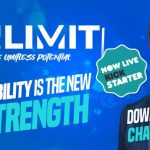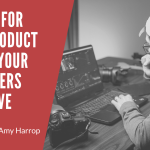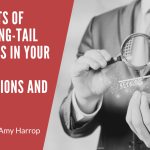 The world of self-publishing changes fast, and if you want to be successful, you’ve got to keep up. One of the markets I’ve been watching shoot into relevance in recent years is audiobooks.
The world of self-publishing changes fast, and if you want to be successful, you’ve got to keep up. One of the markets I’ve been watching shoot into relevance in recent years is audiobooks.
In fact, it’s pretty great.
If you’re also skittish to get started, never fear. Today, I’m going to break down the 4 most important decisions involved in creating an audiobook so that you, too, can get your books into this increasingly-essential format.
Decision 1: Do I want to narrate the book myself, or hire a narrator?
For many authors, this is an easy choice. A lot of us don’t have the time, interest, or “pipes” necessary to create an audiobook that people will clamor to listen to — not to mention the technical expertise required to transform the raw recording into the correct format.
If that’s you, don’t worry: there are more than enough talented narrators out there who will be happy to record it for you. You can either hire a narrator yourself through a freelance service, or use Amazon’s ACX or Findaway Voices — the two major audiobook distribution networks — to connect with one.
For those who do want to tackle the narration personally, you’ll need to make sure you have both the appropriate space and equipment needed to produce a professional product. This will include a quiet room (possibly with some soundproofing), a high-quality microphone, and audio editing software. This can get expensive fast, but there are cheaper options out there as well. Just make sure you do your research — this is definitely the route that will require the most time and knowledge on your part.
Decision 2: What kind of budget do I have for hiring a narrator?
There’s no getting around it: it takes talent to narrate an audiobook. As such, narrators are highly-skilled professionals, and they set their prices accordingly.
Audiobook narrators charge per finished audio hour, and many of them will charge over $200/finished hour. If this sounds like a lot, remember, it takes much more than an hour of work to get an hour’s worth of quality audio. To figure out your book’s likely number of hours, take your word count and divide that by 9,300 words (or an average reading speed of 155 words a minute). A 75,000 word novel, then, can cost over $1,000.
But before you sweat over the numbers too much, remember: all business expenses are an investment. You’ve probably already put money into quality editing, effective cover design, and smart marketing. Why wouldn’t you want to give your audiobooks the same treatment?
It’s also worth noting that ACX and Findaway Voices offer royalty share payment options — meaning the up-front costs are reduced or eliminated completely. So for authors on a budget, there are definitely ways to save money.
Decision 3: What stores do I want to sell at (and do I want libraries to be able to buy my audiobooks)?
Remember those two major distribution networks I was talking about? Now we’re going to start breaking down some of the key differences.
As mentioned, the major players in the self-published audiobook industry are ACX (run by Amazon) and Findaway Voices. Like everything else in self-publishing, a big part of choosing which network you want to work with comes down to: do I want to go exclusive with Amazon, or sell “wide”?
The first misconception I want to clear up is that, unlike ebooks, going “exclusive” with ACX is already a wider distribution than going exclusive through KDP. ACX distributes to Audible, Amazon, and iTunes, so a lot of your big players are already covered. Exclusive distribution also gets you a higher royalty rate, as well as the option of entering into a royalty share agreement with your narrators (cutting out the up front investment costs).
You can still distribute through ACX without going exclusive, though you obviously get the lower royalty rate. And it’s important to note that whichever option you chose, distributing with ACX means you enter into a 7 year distribution agreement, so make sure that you’re ready to make this a long-term commitment.
On the other hand is Findaway Voices. Like ACX, Findaway Voices offers ways to connect with narrators. They also offer a royalty share option, though theirs requires a 50% up-front payment, and then a 50/50 split of the royalties after that.
But if you want your books available on the widest range of platforms, including selling to libraries, Findaway is the distributor for you. It does make the math of figuring out your royalties a little more complicated, only because they have so many different agreements with so many different stores. But they do provide a comprehensive sales tracking interface, including real time results from several stores.
The other distribution option is Kobo. Unlike the others, Kobo does not connect you with narrators, so you will need to have your book ready to go first. But if you’re already uploading your ebooks to Kobo, it can make sense to add your finished audiobook to the catalog, as well. In addition, Kobo is working to get their audiobooks into Overdrive for purchase by libraries as well, so while they’re smaller than the others (and you’ll need to email them to opt-in to the program at this point), they’re definitely growing and worth keeping an eye on.
Decision 4: Do I want control of the price of my audiobooks, or would I rather not worry about it?
This one is pretty straightforward: ACX determines the price of your audiobooks, based on the length of the book and industry averages; Findaway Voices and Kobo let you set the price yourself.
Whether setting the price yourself is a benefit or a burden is really up to you. Some people would rather not worry about it, especially if audiobooks aren’t their main sales focus. Others would never dream of giving up that kind of control. There really is no wrong answer to this, but it’s an important consideration nonetheless.
And there you have it: the basic breakdown of everything you’ll need to consider when getting into audiobooks! I told you it wasn’t that complicated. Like all areas of publishing, though, the world of audiobooks is an ever-changing landscape, and it’s important to stay on top of things if you’re going to enter into it. But with a little planning and a pinch of budgeting, you too can make this an essential part of your overall sales plan.
About the Author:
Jenn Gott is an indie author and a writer with Reedsy, so she basically spends all her time either writing books, or helping people learn how to write books. She firmly believes there is no writing skill you cannot learn with practice and the right guidance. When she’s not working, she enjoys keeping up with the latest superhero movies, reading, and swimming.



